Jumping may not be a big deal for most species. However, some animals cannot jump because they lack strength and agility. In this article, we’ll discover animals in the animal kingdom that can’t jump and why they lack this ability.
Some animals jump for delight, some jump to strengthen limbs, while others jump out of their skin in fear! Many predators leap from above on their prey, and if they’re fast enough, the prey jumps out of danger! Jumping is natural for many creatures, but others will never be able to jump.
Jumping necessitates a lot of muscles and motor functions (and normally a set of legs), which not all animals possess. Some creatures are too heavy to move their bodies off the ground. Other species lack the muscle mass or appendages capable of lifting themselves off the ground.
Animals that can’t jump evolved in a way that is no longer necessary for them. Each creature has discovered different ways to protect themselves despite their incapacity to jump. Let’s determine if your favorite animals cannot jump in this article.
Different Animals That Can’t Jump
1. Elephants
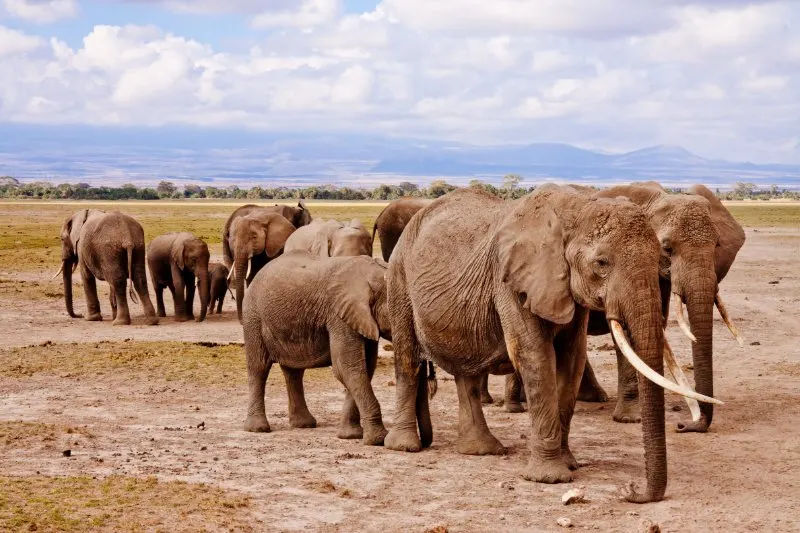
Elephants are the most well-known animals for their inability to jump. Despite popular belief, the elephant is not the only mammal that cannot jump; elephants are just the largest mammals unable to jump. Unlike their distant relative, the guinea pig, they are too heavy to lift their feet off the ground simultaneously.
Elephants can’t jump because of their anatomy; to begin with, elephants are extremely heavy. African elephants weigh roughly 13,000 pounds on average (5,800 kilograms), which is around the weight of ten mid-size automobiles. If they could jump, the weight of their landing would cause their knees to break. However, it is not only their weight that makes jumping difficult; it is also their legs and their history.
Another significant reason elephants cannot jump is due to their leg muscles and morphology. Elephants have smaller legs and weak leg muscles compared to the rest of their body, unlike most mammals, which have long and strong hind legs, large calf muscles, and robust lumbar discs.
It is because their legs are for strength, stability, and durability rather than leaping and jumping. An elephant’s legs are so strong that they can carry the whole weight of the animal – even when lying down!
Another intriguing reason an elephant can’t jump is that they’d fall if they could. Because elephants have very long and narrow backs, they are top-heavy. This is true for African elephants, who have even more curled backs than Asian adult elephants.
Elephants don’t need to jump in the wild; there has never been a reason for elephants to jump throughout history. They may use their trunks and tusks to reach high-up food, and they can use their size and strength to discourage predators. Jumping is not an evolutionary benefit for this mammal.
But elephants have their distinct characteristics, such as self-awareness. Self-awareness is also found in humans, dolphins, apes, and other mammals.
See Related: Do Lions Eat Elephants? Here’s What to Know
2. Tortoises
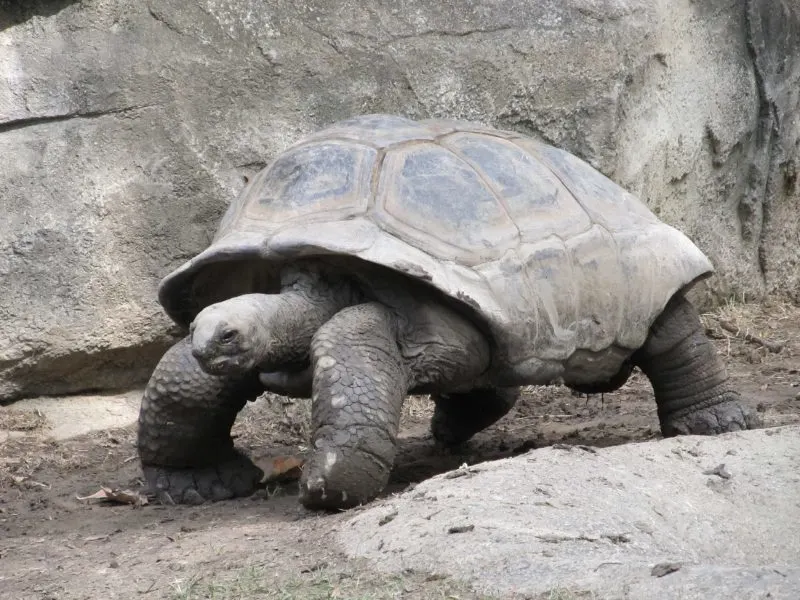
The tortoise cannot jump because it lacks agility and speed. And it cannot swim for the same reasons. Tortoises can be examples of patience and tenacity due to their long lifespans and reputation for moving slowly. Despite their slowness, tortoises can walk around 4 miles every day. Now, that’s a lesson in perseverance we can all learn from!
They are also among the longest-living reptiles on the planet. Tortoises can survive in extreme circumstances because their digestive system uses every drop of water and nutrients from each mouthful.
In self-defense, the tortoise uses its gular horns, a protrusion of its plastron, or bottom shell as it’s usually known. The gular horn is a defense mechanism used by both female and male tortoises, though the males are larger. It is also often used in combat with other male tortoises – which is a hilarious spectacle.
See Related: Animals that Start with X
3. Hippos
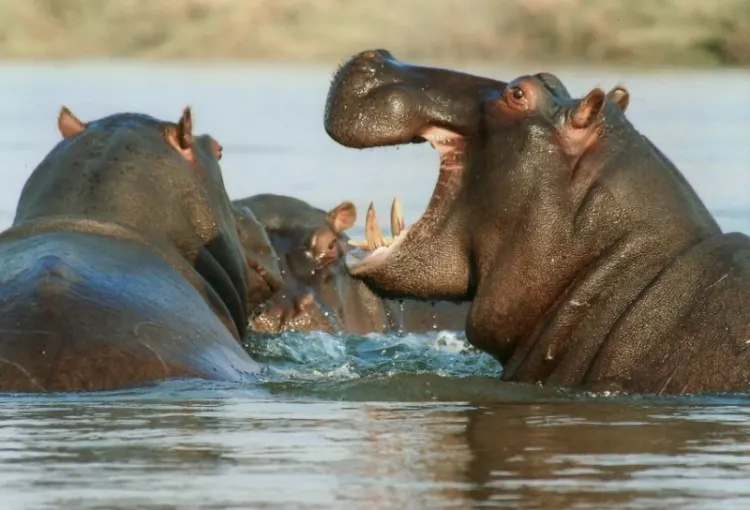
Hippos or hippopotami, like elephants, cannot jump due to their weight. The hefty weight of hippos may come in handy when predators encroach on their territory. Hippopotami are very territorial and extremely dangerous. They are also ferociously stinky.
If a hippopotamus appears to be yawning at you, it is about to honk and snort. This is how the animal communicates threats before attacking. These semi-aquatic giants defend themselves with more than just their teeth; they also use their massive body mass.
A hippopotamus will not hesitate to strike opponents with its head in combat. It gives forth a terrifying battle cry while doing so. They can split a small boat in half with their strong teeth and attack over 500 people in Africa each year, killing many.
See Related: Cruel Animals Around the World
4. Sloths
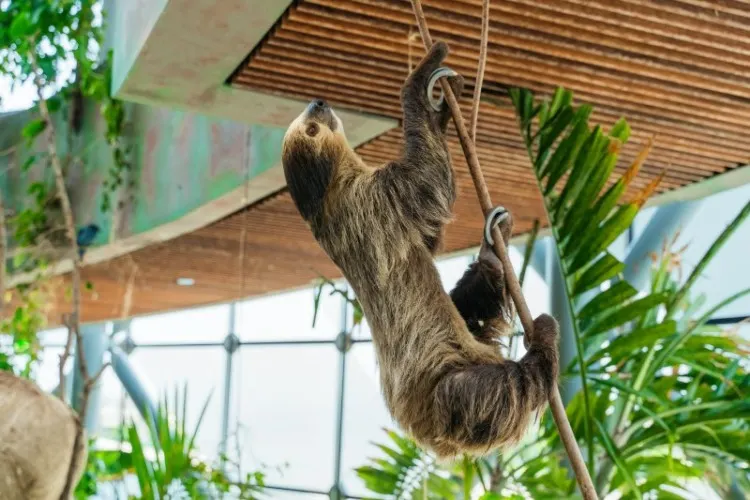
The sloth is one of the world’s slowest-moving animals, so slow in fact that they are noted for having fungi and green algae that grow in their fur. This species may have the physical strength to jump, but its sluggish motions prohibit it from doing so.
Sloths develop robust limbs and have one of the strongest grabs of any animal recorded because they spend their whole lives hanging from trees. Even death might not liberate a branch from a sloth’s grip!
Sloths rarely leave the trees from which they hang because many of their predators roam the forest floor. They only descend to the forest floor to defecate, which occurs once a week.
To defend themselves, they hide in trees and don’t move till the threat has passed. Because sloths are among the slowest creatures on the planet, they use their sharp nails and teeth for self-defense against predators.
See Related: These 13 Animals Have the Best Hearing in the World
5. Rhinos
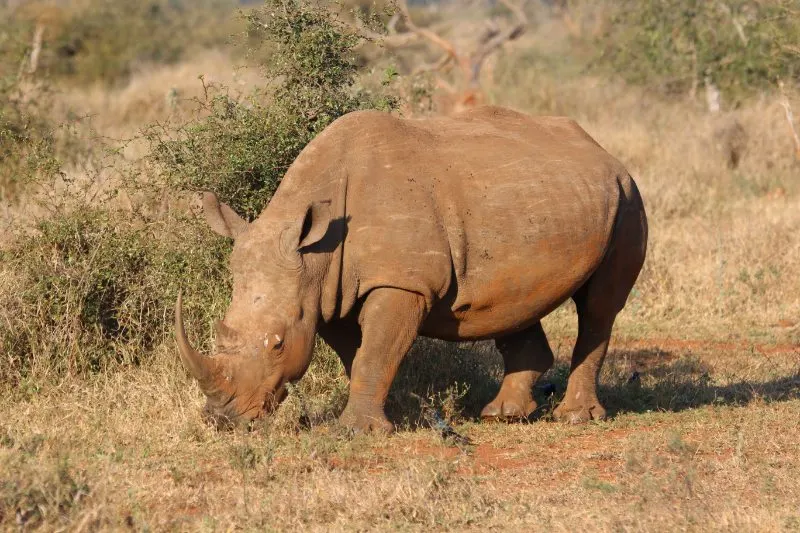
Your average rhino weighs 1,322-7,716 pounds, making it too large to pull from the ground. Despite their size, and inability to jump rhinos can run at speeds of 30-40 mph. Not only that, but these creatures have excellent hearing and senses of smell.
A group of rhinoceroses is (somewhat appropriately) known as a crash, and a crash will only attack predators if they are threatened. Because male rhinos are known to be solitary, most collisions involving a crash and predators exclusively involve rhino moms and their offspring.
Another distinctive characteristic of rhinoceroses is that they defecate in the same spots called latrines and are used for more than just waste disposal. Rhinos have poor vision, and they may attack rocks and trees if they believe they are in danger.
See Related: Black Rhino: Why Is It Endangered?
6. Snakes
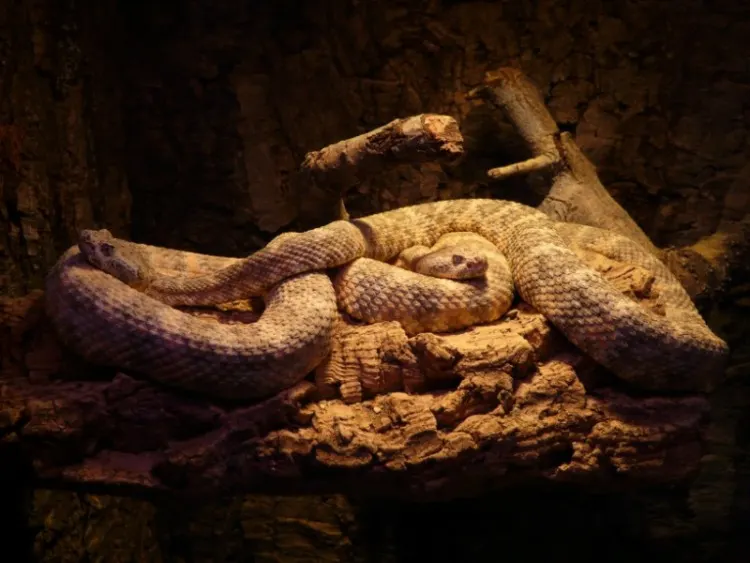
Although snakes lack legs in the traditional sense (they do in fact have thousands of teeny, tiny scales that behave like legs to move them along the ground) they have long bodies filled with muscles having great control over most motions. A snake can move forward using its muscles but cannot jump up.
“Aha!” I hear you retort, “What about Chrysopelea, aka the family of flying snakes? Don’t they jump?” Well, yes and no.
Flying snakes (also known as gliding snakes) climb to tall limbs of trees, before strategically lunging forward and falling toward their prey. They can actually influence their own glide path in mid-air, and some are reportedly better at flying/gliding than flying squirrels! That said, this is not the same as being able to jump upwards from a standing start.
And no; before you dig your heels in further about whether or not snakes can jump, striking at prey as some snakes do, does not a jump make.
See Related: These Are 13 of the Longest Living Animals on Earth
7. Chameleons
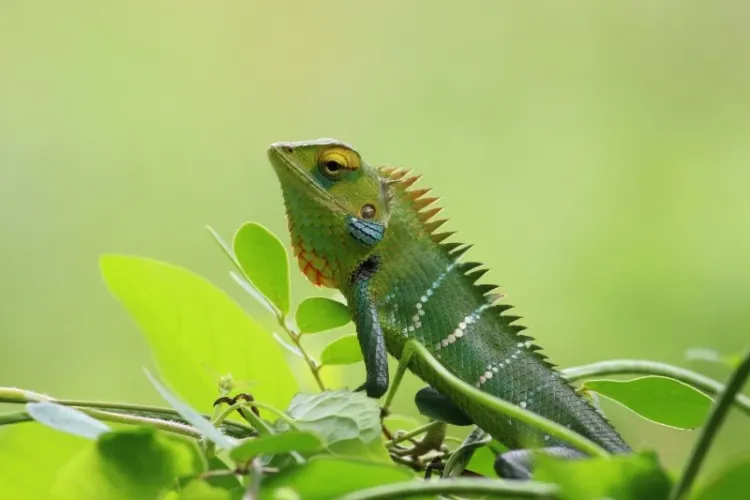
Chameleons enjoy climbing trees and hiding from predators under leaves and on branches. With such skinny legs, chameleons lack the speed and muscular structure to jump, but they have other abilities better suited to survival.
The chameleon’s color-changing ability helps these short-lived reptiles blend in with their surroundings. They can change their color to help them hide from various predators. Chameleons’ colors can also change depending on their mood, time of day, temperature, or humidity. Consequently, they are highly prized as pets.
See Related: How Do Animals Adapt To Their Environment?
8. Porcupines
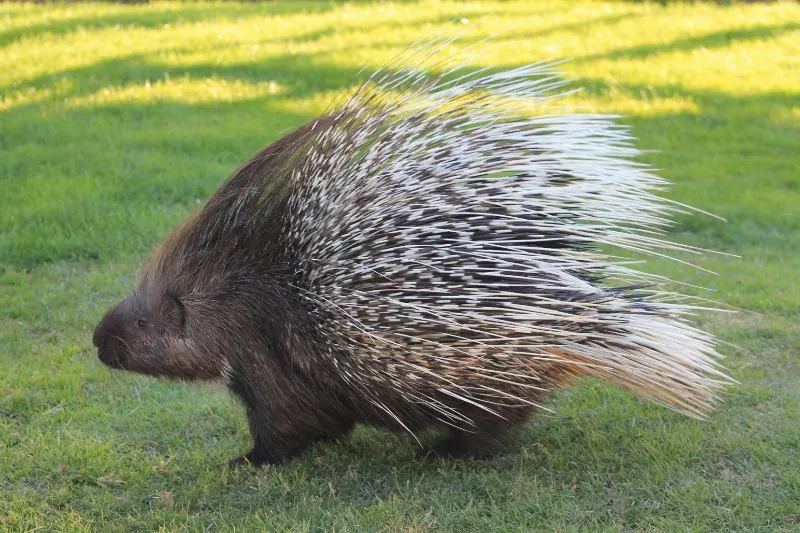
Porcupines can defend themselves against predators with their sharp quills, but they can’t jump out of the way of a predator. Porcupines are protected by their 30,000 quills – a mix of softer and long tough quills that can actually kill would-be predators.
Seriously! They are strong and sharp enough to pierce deeply into the flesh and internal organs. People have taken porcupine quills to the heart and died. Worse, these quills are barbed, so they stick into flesh and are difficult and painful to remove.
When scientists from the Smithsonian Conservation Biology Institute researched porcupines in the wild, they found that if the animals were moving from tree to tree, they never leaped but clung to bridges made of interweaving branches.
See Related: Difference Between African and Asian Elephants: A Comprehensive Comparison
9. Leeches
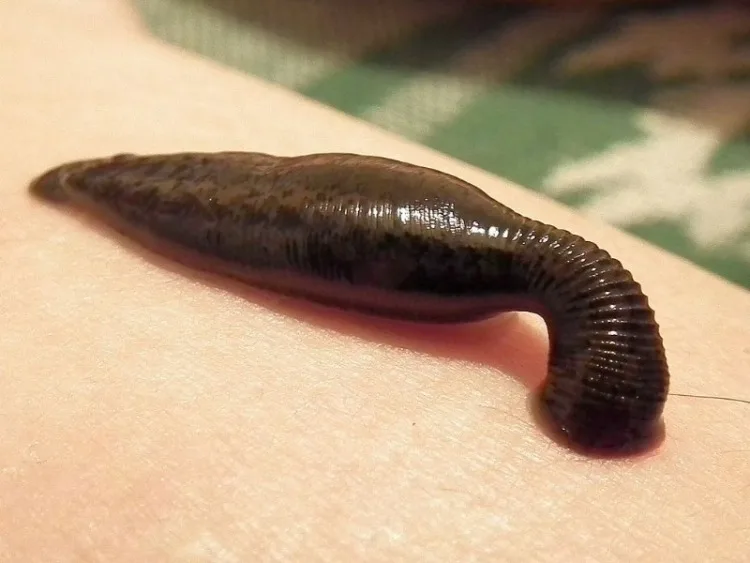
Leeches cannot jump, although leeches can move quite quickly and in an unusual, almost unearthly manner. Leeches are predatory worms that wriggle across bodies of water for food – their food being the blood of other organisms. Leeches lack the necessary muscles for jumping and spend most of their life in water. They only leave the water when they are bonded to a host.
Not every leech enjoys the taste of human blood. Everyone thinks all leeches feed on blood, but most actually feed on mollusks and bugs. Even bloodsucking leeches prefer frog and turtle blood over human blood.
See Related: Can Parakeets Eat Worms? Everything You Need To Know
10. Caecilians
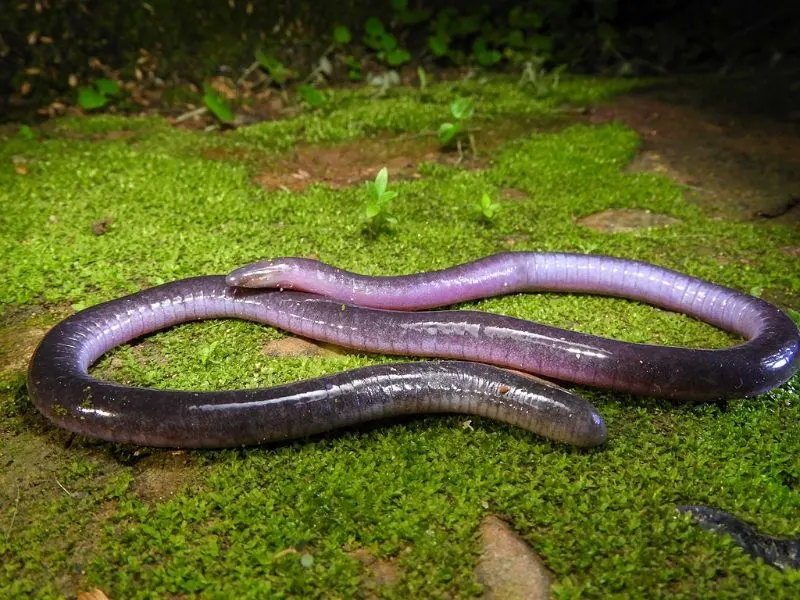
Caecilians are legless amphibians often misidentified as gigantic worms or water snakes. Their ringed bodies, muted colors, tiny eyes and mouths, and lack of detail make distinguishing their heads from their tails difficult. And because they lack limbs, these species can’t jump.
Worms, mollusks, frogs, lizards, tiny snakes, and termites are among their favorite foods. These slimy beasts will even hunt and eat their kind, and they are the only amphibians with tentacles on the planet (albeit teeny, tiny tentacles). They are placed between the caecilian’s nostrils and eyes and assist the caecilian in finding food.
See Related: Most Endangered Amphibians On Earth
11. Starfishes
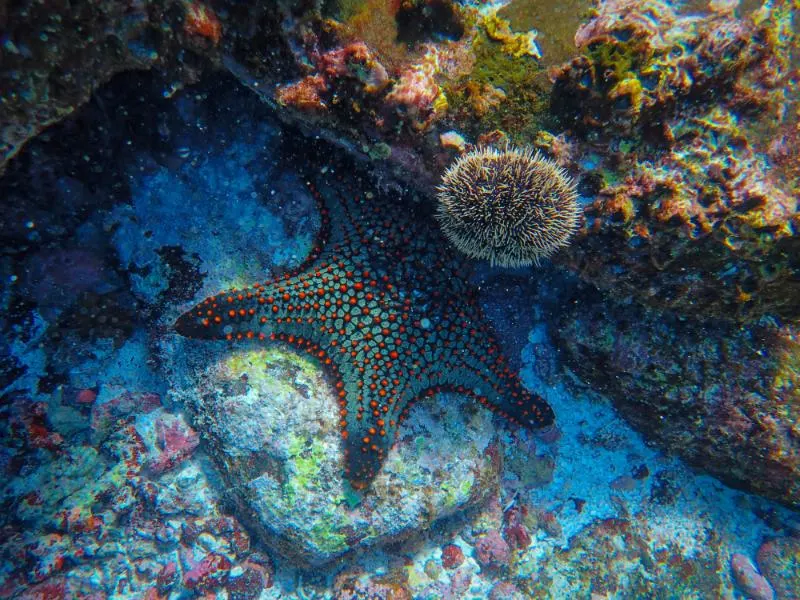
Starfish are unable to jump due to a lack of proper muscle development. Although starfish cannot jump, they can regenerate any limbs that they lose, which, on balance, I think I’d rather be able to do instead of jumping.
Starfish are strange creatures. Starfish are not well-known for their intelligence due to the absence of a brain. Starfish also lack blood, which helps them survive even after losing sections of themselves.
Starfish can survive for at least 35 years due to their steady development and strong bodies. Larger starfish have been reported to live even longer. Their age range is influenced by their species, of which there are approximately 2,000 known species.
See Related: What Lives In The Deepest Part of the Ocean? Incredible Mariana Trench Animals
12. Clams
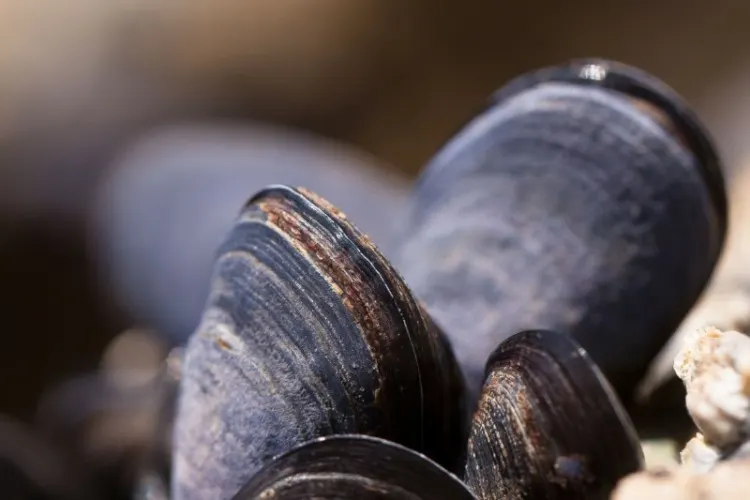
There are around 15,000 different species of clams, yet only 150 of them are edible. And none of these clam species can jump. Sorry clams.
The source of the clam’s jumping difficulty can be found by observing its appendage-less body. And while Clams may not have eyes, hearing, or noses either, they can still capture and devour plankton with the best of them.
Clams begin as larvae and do not develop into the shelled clams we know for around 25 to 28 months. Those who can escape their predators can live for 33 to 36 years. While they are thought to be happy, there is no evidence to suggest clams have emotions.
See Related: Difference Between African and Asian Elephants: A Comprehensive Comparison
13. Sea Sponges
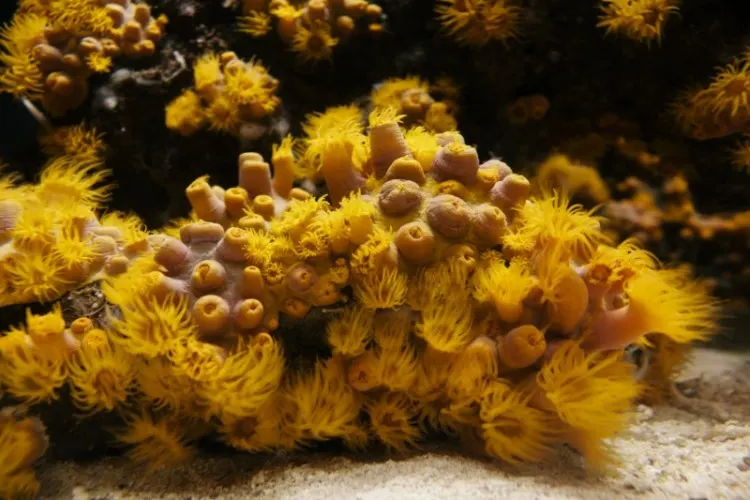
Spongebob, the happy sea sponge from SpongeBob SquarePants, may be capable of jumping, but sea sponges in real life do not. Sea sponges are unable to move at all.
In addition to being immobile, sea sponges cannot see, hear, smell, feel, or even think. They lack eyes, ears, noses, nerves, muscles, organs, and brain. It’s a rough old life. While this may make them sound more like trees or plants than any other sea creature, they are still animals.
Despite their immobility, these organisms obtain their nourishment by filtering the water that passes through them and capturing plankton and oxygen. They also produce toxins to keep their predators (predominately turtles and fish), from consuming them.
See Related: Animals That Start With X
BONUS Woody Harrelson

Everyone knows this dude can’t jump, at least nowhere near as well as Wesley Snipes. But don’t let that color your opinion of one of America’s most beloved actors.
Widely known for his countless memorable roles on the big and small screen, his plays, his veganism, and his penchant for the electric lettuce, Mr. Harrelson is also a committed environmentalist. So he’s alright in our book.
FAQs
Which animal can’t jump?
The animal that can’t jump is the elephant. Elephants are the largest land animals on Earth, weighing up to 22,000 pounds. Despite their size and strength, their anatomy doesn’t allow them to jump due to their heavy bones and lack of leg flexibility.
Does a sloth jump?
A sloth is a slow-moving tree-dwelling mammal found in Central and South America. Sloths do not jump as they are not built for jumping due to their anatomy and slow metabolism. Instead, they move slowly and deliberately through the trees using their long arms and sharp claws to grip onto branches.
What are 2 animals that can jump?
Two animals that can jump are kangaroos and rabbits. Kangaroos have powerful hind legs that can jump up to 30 feet in a single bound. Rabbits have strong hind legs that can jump up to 3 feet high and 9 feet long in a single hop.
What is the only animal with 4 knees?
The animal that has four knees is the elephant. Elephants have four legs, each with a knee joint. These knee joints are actually the elephant’s back legs, and the front legs are more similar to human arms.
Related Resources:
- Fastest Animals in the World
- Reasons Why Animals Should Not Be Kept in Zoos
- Why Were Animals So Big in the Past? Here Are Reasons


